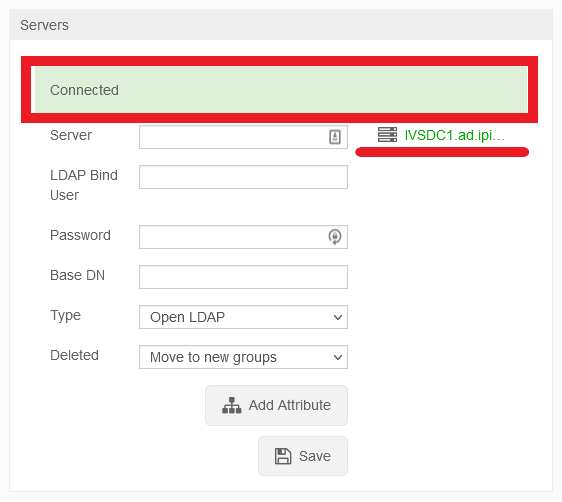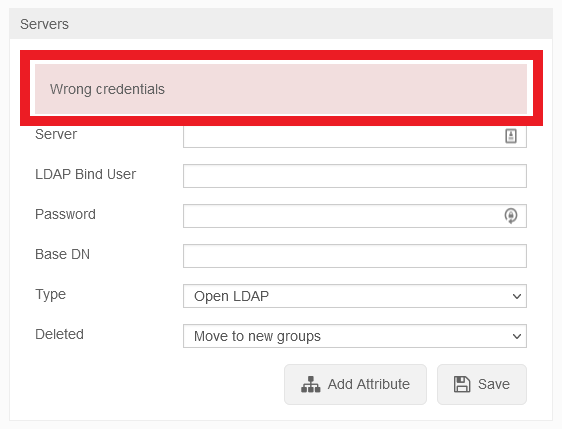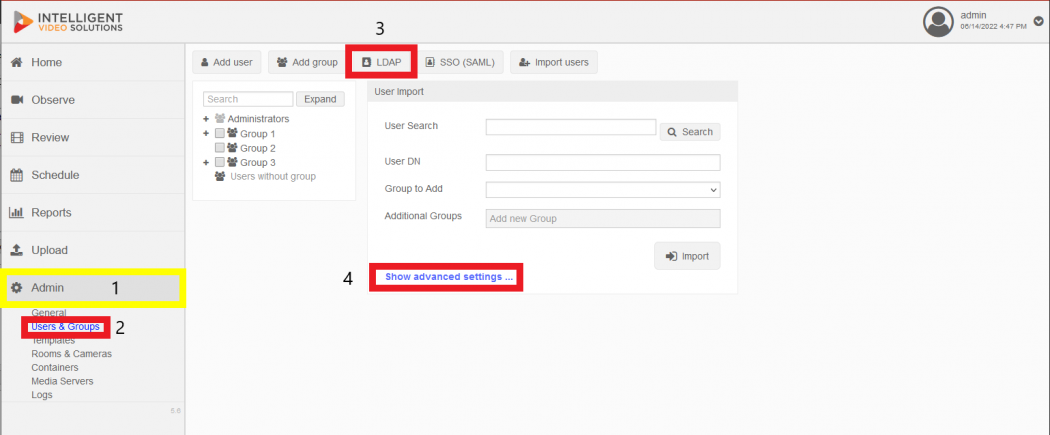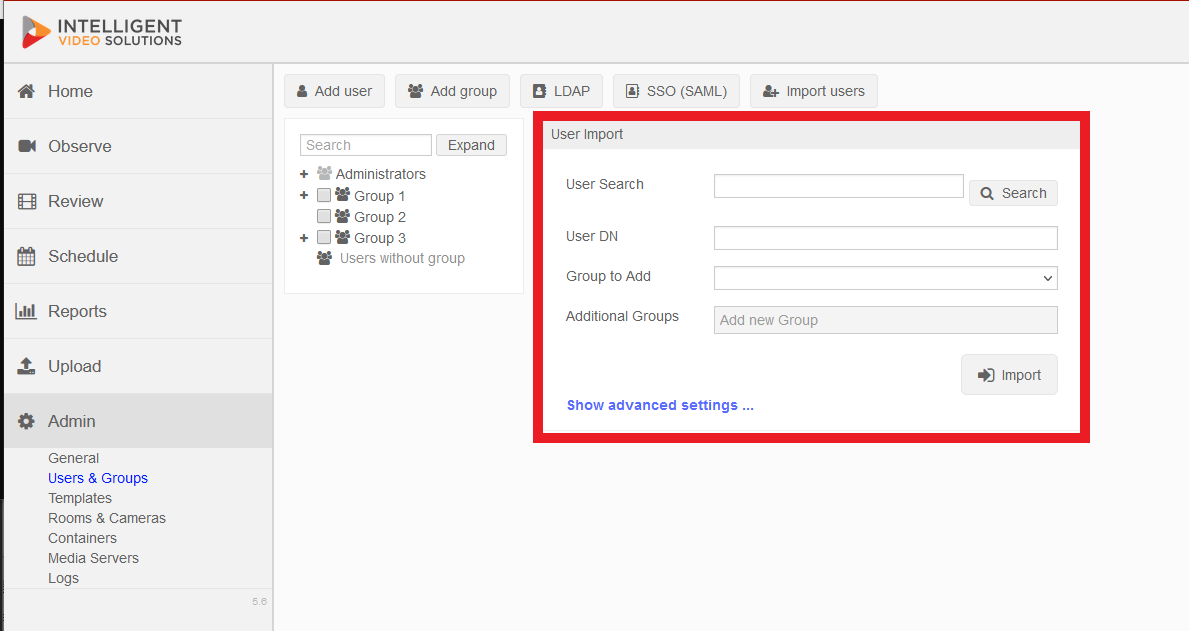Difference between revisions of "LDAP Configuration"
IVSWikiBlue (talk | contribs) (→Connecting to the LDAP Server) |
IVSWikiBlue (talk | contribs) |
||
| Line 1: | Line 1: | ||
==Connecting to the LDAP Server== | ==Connecting to the LDAP Server== | ||
| − | #From another computer go to the client interface (using | + | #From another computer go to the client interface (using Chrome, Firefox, or other standard web browser) |
| − | #Log in (default username: “admin” password: “admin”) | + | #Log in using your credentials (default username: “admin” password: “admin”) |
| − | #Click on Admin -> Users & Groups -> LDAP | + | #Click on '''Admin''' -> '''Users & Groups''' -> '''LDAP''' -> '''Show Advanced Settings''' |
| − | + | #:[[File:LDAP1.png|1050px]] | |
| − | #Enter the IP Address or FQDN of your Active Directory or other LDAP compatible server in the | + | #Scroll down to the box that says '''Servers''' |
| + | #Enter the IP Address or FQDN of your Active Directory or other LDAP compatible server in the Server field. | ||
#: '''Note:''' If you are using LDAPS, enter the IP or FQDN as ldaps://192.168.0.10 | #: '''Note:''' If you are using LDAPS, enter the IP or FQDN as ldaps://192.168.0.10 | ||
| − | #Enter a user with read access | + | #Enter a Service Account user with read access in the LDAP Bind User field. '''The user must be entered as user@domain.com''' |
| − | #Enter the password | + | #Enter the Service Account password |
| − | #Click Save<br><br>If the credentials were accepted and a connection was established, you will receive a message stating connected.<br>[[File:LDAP2.png]]<br><br>If the connection fails, you will receive an error message.<br>[[File:LDAP3.png]] | + | #Click '''Save'''<br><br>If the credentials were accepted and a connection was established, you will receive a message stating connected.<br>[[File:LDAP2.png]]<br><br>If the connection fails, you will receive an error message.<br>[[File:LDAP3.png]] |
==Syncing Security Groups== | ==Syncing Security Groups== | ||
| Line 21: | Line 22: | ||
:[[File:LDAP5.png]] | :[[File:LDAP5.png]] | ||
#Type the distinguished name for the user into the LDAP field, omitting the DC components | #Type the distinguished name for the user into the LDAP field, omitting the DC components | ||
| − | #: '''Example:''' CN= | + | #: '''Example:''' CN=testuser,OU=Users |
#Select a Group from the Group to Add field. | #Select a Group from the Group to Add field. | ||
#: '''Note:''' If you do not select a group, the user will still be important and must be assigned a group manually. | #: '''Note:''' If you do not select a group, the user will still be important and must be assigned a group manually. | ||
Revision as of 14:12, 14 June 2022
Connecting to the LDAP Server
- From another computer go to the client interface (using Chrome, Firefox, or other standard web browser)
- Log in using your credentials (default username: “admin” password: “admin”)
- Click on Admin -> Users & Groups -> LDAP -> Show Advanced Settings
- Scroll down to the box that says Servers
- Enter the IP Address or FQDN of your Active Directory or other LDAP compatible server in the Server field.
- Note: If you are using LDAPS, enter the IP or FQDN as ldaps://192.168.0.10
- Enter a Service Account user with read access in the LDAP Bind User field. The user must be entered as user@domain.com
- Enter the Service Account password
- Click Save
If the credentials were accepted and a connection was established, you will receive a message stating connected.
If the connection fails, you will receive an error message.
Syncing Security Groups
- Type a name into the LDAP Sync Schedules name field.
- In the Bind Script field, enter the DN for the security group without the DC components.
For Example: CN=VALT Users, CN=Users - Select a group the users should be added to. A group must be specified.
- Select a sync interval if you would like to automatically import new users added to the group.
- Click Save to save the sync schedule or Import to perform an import and save the schedule.
Importing an Individual User
- Type the distinguished name for the user into the LDAP field, omitting the DC components
- Example: CN=testuser,OU=Users
- Select a Group from the Group to Add field.
- Note: If you do not select a group, the user will still be important and must be assigned a group manually.

